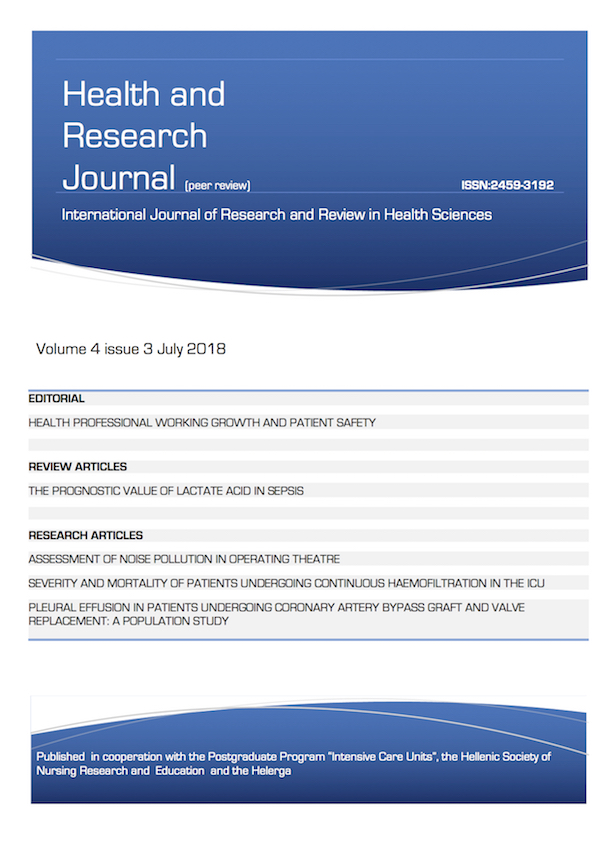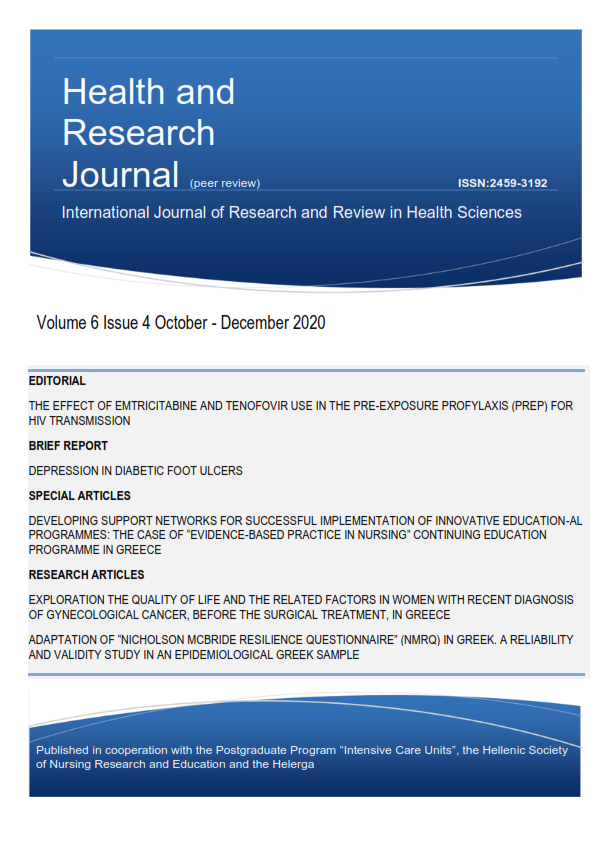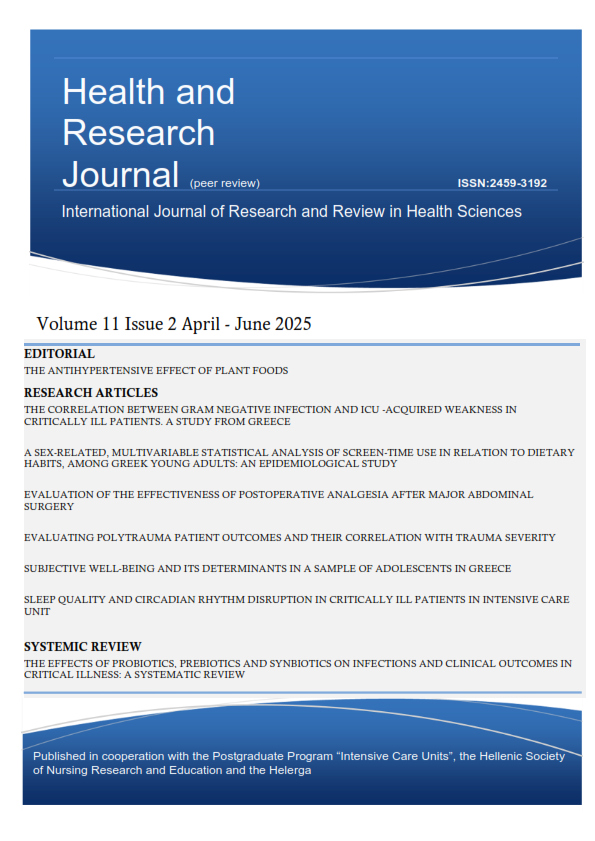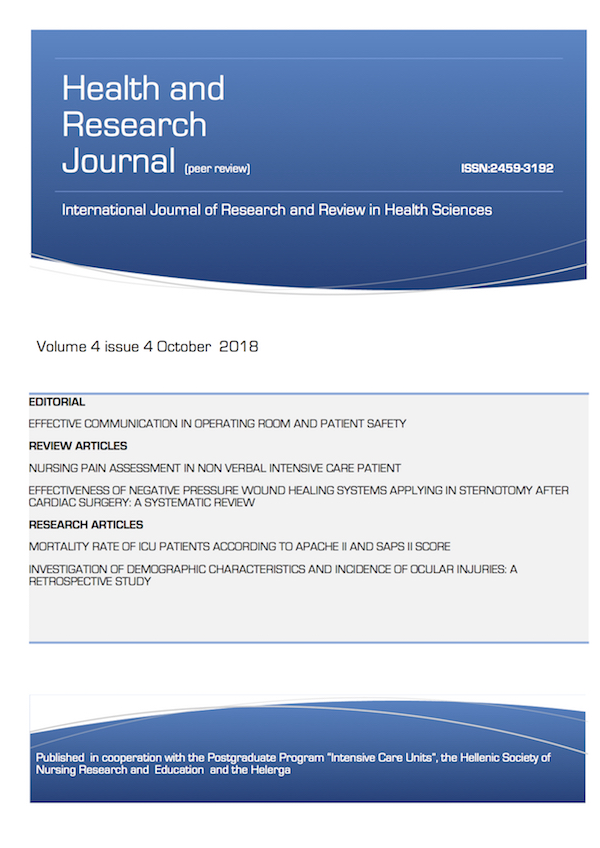Transportation time for a trauma patient admitted to the emergency department of a public general hospital in Attica

Abstract
Introduction: Initial management of emergencies, as a trauma patient, is one of the most difficult and multi-faceted problems in the emergency medicine. The transportation time for a trauma patient, is absolutely definitive for their health outcome
Aim: The register of the transportation time for a trauma patient, from the time that the first aid called, until the time of a trauma patient admitted to the Emergency Department (ED).
Material and Methods: The studied sample consisted of 95 trauma patients aged over 14 years old and Injury Severity Score (ISS) >15 who were transported to the ED of a general hospital in Athens. Data analysis was performed with the statistical package SPSS ver. 19.0.
Results: According to demographic characteristics the 68,4% were males, the 83, 2% were Greeks and the mean age of study participants was 41, 8 έτη ± 15,9. The main cause accident was the motorcycle accident (34, 8%). The time that the first aid called until the time that the first aid arrived to the scene was 12, 5 ±8 min. The time that the first aid arrived to the scene until the receipt time was 14,6 ±11,2 min. The arrived time to the scene until the time in which the First Aid receipt the trauma patient was varied according the way of accident, specifically in cases entrainment by vehicle the time was significantly higher (18,4 ±15,6 min) in relation to the accidents with motorcycle (9,7 ±4,2 min). Furthermore the time of arrival until the receipt was significantly greater when there was evacuation of the car. The period time of receipt until the arrival in ED was 17, 8 ±8, 7 min. Finally, the total time from the time that the First Aid called until the arrival to the ED was 44, 1 ±18, 4 min.
Conclusions: The extended residence time of the polytrauma patient at the accident place and his transportation to the emergency department has negative consequences for his health.
Article Details
- How to Cite
-
Armata Ε., Evangelatos Α., Papageorgiou, D., Fasoi, G., Stavropoulou – Κelesi Μ., & Marvaki, C. (2017). Transportation time for a trauma patient admitted to the emergency department of a public general hospital in Attica. Health & Research Journal, 3(3), 145–160. https://doi.org/10.12681/healthresj.22214
- Section
- Original Articles
Copyright notice:
The journal "Health and Research Journal" reserves the rights for copyright of the content of the website and also the copyright of the articles published.
By virtue of their appearance in this journal, the articles are free to be used for non-commercial purposes. However, the articles cannot and must not be used in anyway, published elsewhere or modified without any reference to the author and the first publication of the article.






